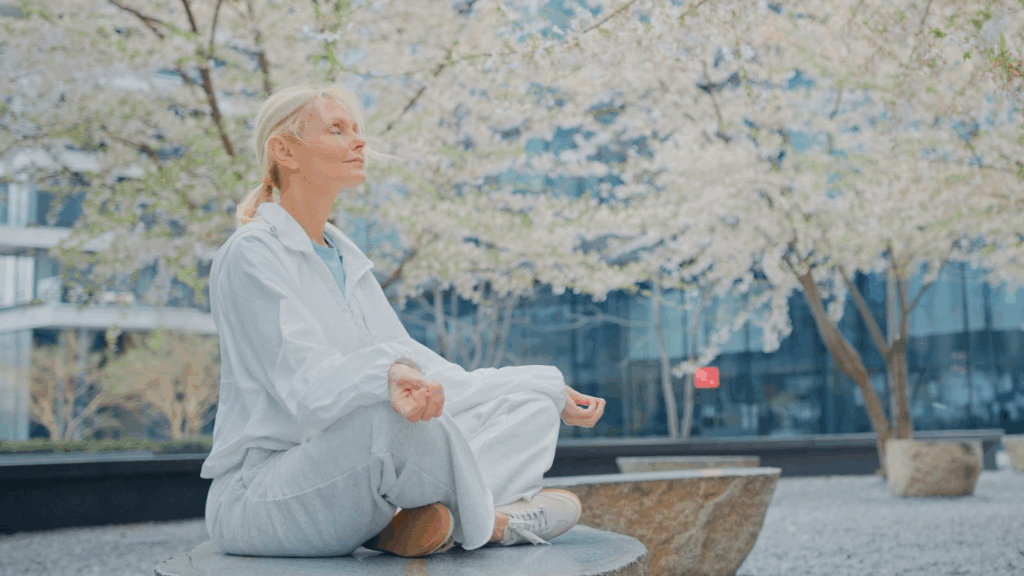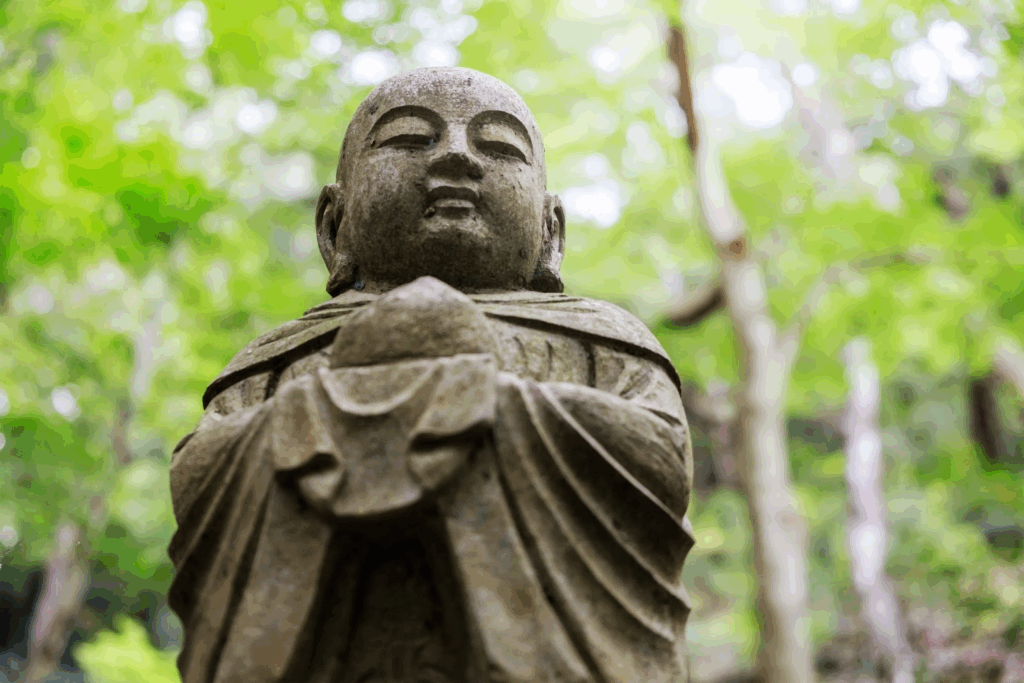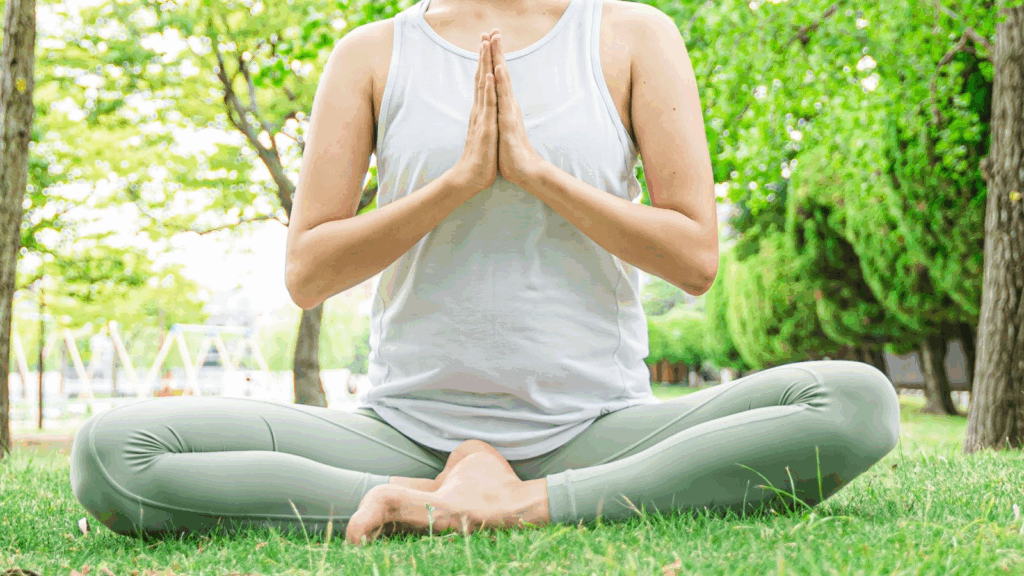Anxiety Disorder Meditation: Finding Calm Amid Turmoil

Anxiety disorder meditation offers a gentle way to restore balance. For many people, meditation for anxiety disorder can complement therapy and medical care, providing daily calm and resilience. Anxiety disorder can feel like an invisible weight pressing on the chest. The heart races, thoughts spiral, and even the simplest moments of life can feel overwhelming. While therapy and medical care are important foundations of healing, meditation offers a path of self-discovery that can support calm and resilience.
What Is Anxiety Disorder?
Anxiety disorder is a recognized mental health condition characterized by persistent and excessive worry, fear, or nervousness that interferes with daily life. Unlike ordinary stress or temporary anxiety before an event, anxiety disorders are longer lasting and often disproportionate to the situation at hand.
Clinically, anxiety disorders include several subtypes such as generalized anxiety disorder (GAD), panic disorder, social anxiety disorder, and specific phobias. Common symptoms may involve:
- Restlessness or a constant sense of unease
- Rapid heartbeat or shortness of breath
- Difficulty concentrating
- Sleep disturbances
- Intense fear or worry that feels difficult to control
Medical professionals diagnose anxiety disorders using criteria outlined in the Diagnostic and Statistical Manual of Mental Disorders (DSM-5). Treatment often includes therapy, medication, and lifestyle practices—among which meditation can play a supportive role in reducing symptoms and restoring calm.
How Meditation Helps with Anxiety Disorder

Meditation is not only a spiritual discipline — it is also strongly supported by modern scientific research. Over the past two decades, studies conducted by institutions such as Harvard Medical School, the American Psychological Association (APA), and the National Center for Complementary and Integrative Health (NCCIH) have consistently shown that meditation can significantly reduce the symptoms of anxiety disorders.
Neuroscience findings show that regular meditation:
- Decreases overactivity in the amygdala, the part of the brain responsible for fear and threat responses
- Strengthens the prefrontal cortex, improving decision-making and emotional control
- Enhances connectivity between brain regions involved in attention and regulation, making it easier to manage intrusive or spiraling thoughts
Physiological benefits are also well documented. Meditation:
- Lowers levels of cortisol and adrenaline, the stress hormones that drive anxious feelings
- Improves heart rate variability (HRV), a marker of resilience in the nervous system
- Activates the parasympathetic “rest and digest” response, counteracting the body’s fight-or-flight stress state
Psychological outcomes from clinical trials highlight that meditation:
- Reduces the frequency and intensity of panic attacks in those with panic disorder
- Improves social confidence and reduces avoidance in people with social anxiety
- Lessens persistent worrying in generalized anxiety disorder (GAD)
- Helps regulate sleep, which is often disrupted in people with chronic anxiety
Because of these results, many mental health professionals now recommend meditation as a complementary practice alongside evidence-based treatments such as cognitive-behavioral therapy (CBT) and prescribed medications. Some therapeutic approaches, like Mindfulness-Based Stress Reduction (MBSR) and Mindfulness-Based Cognitive Therapy (MBCT), directly integrate meditation into clinical treatment plans and have been proven effective in large-scale studies.
That said, meditation should not be viewed as a cure-all or a replacement for professional care. It works best when combined with other treatments and healthy lifestyle practices such as regular exercise, balanced nutrition, and adequate sleep. The greatest benefits are typically seen when meditation becomes a consistent daily habit, even if only for a few minutes at a time.
A Gentle Practice to Begin

A traditional practice often recommended for calming the mind is Susoku-kan, or breath-counting meditation. Rooted in Zen training, Susoku-kan teaches practitioners to focus on the natural rhythm of breathing by silently counting each exhalation. This simple yet powerful method has been used for centuries in monasteries to develop concentration and inner stillness, and it is especially helpful for easing anxiety.
If you are experiencing anxiety, you can begin with short Susoku-kan sessions. Even two minutes can create a noticeable shift. Try this:
- Sit comfortably with your back upright but relaxed
- Place one hand on your chest and notice your breathing
- Inhale slowly through the nose, and as you exhale, silently count “one”
- Continue with each breath — inhale, exhale “two”… up to ten, then gently return to one
- If thoughts come, imagine them as clouds drifting across the sky, and return to the count
By practicing Susoku-kan daily, you create a steady rhythm that anchors the mind and body. This gentle ritual reminds you that calm and clarity are always within reach, even in moments of fear or unease.
The Deeper Path of Meditation
For those living with anxiety disorder, meditation becomes more than a coping tool—it can be a teacher. Over time, meditation reveals that the mind itself is not the enemy. Thoughts rise and fall like waves, but beneath them is an ocean of stillness.
In Zen and Buddhist traditions, practitioners often describe this stillness as the “original mind”—calm, unshaken, and whole. By connecting to this deeper presence, anxiety begins to lose its hold.
Conclusion: Step Into Silence

Healing anxiety disorder is not about forcing thoughts to stop. It is about creating a sanctuary within. Meditation invites us to step into silence, breathe deeply, and rediscover the calm that has always been within us.
Even in moments of fear, the practice of meditation whispers: you are not your anxiety. You are the awareness that watches it pass.
Frequently Asked Questions
FAQ 1: What is anxiety disorder?
Answer: Anxiety disorder is a clinical mental health condition marked by persistent fear, worry, or nervousness that interferes with daily life.
Real Results: Studies from the National Institute of Mental Health show that anxiety disorders affect over 30% of adults at some point in life.
Takeaway: Understanding the condition is the first step toward managing it.
FAQ 2: Can meditation cure anxiety disorder?
Answer: Meditation cannot cure anxiety, but it can significantly reduce symptoms and improve overall well-being.
Real Results: Research published in JAMA Psychiatry found mindfulness-based therapy as effective as medication in reducing anxiety symptoms.
Takeaway: Meditation is a tool, not a cure, but it can transform how anxiety is experienced.
FAQ 3: How does meditation help with anxiety disorder?
Answer: Meditation trains the mind to observe thoughts without reacting, lowers stress hormones, and activates the body’s relaxation response.
Real Results: A Harvard study reported that an 8-week mindfulness program reduced anxiety levels by up to 39%.
Takeaway: Calm is cultivated through awareness, not avoidance.
FAQ 4: What type of meditation is best for anxiety?
Answer: Mindfulness meditation, breath awareness, and body scan practices are most effective for anxiety relief.
Real Results: Clinical trials show that breath-based mindfulness reduces panic attack frequency in many practitioners.
Takeaway: The simplest practices are often the most powerful.
FAQ 5: How long should I meditate daily if I have anxiety disorder?
Answer: Start with 2–5 minutes daily, gradually increasing to 10–20 minutes as comfort grows.
Real Results: Beginners who practiced 10 minutes daily for 6 weeks reported measurable reductions in anxiety scores.
Takeaway: Small steps practiced consistently lead to big changes.
FAQ 6: Can meditation replace therapy or medication for anxiety disorder?
Answer: No. Meditation should be used alongside professional care, not as a substitute.
Real Results: Many therapists recommend meditation as a complementary practice with CBT and medication.
Takeaway: Healing is strongest when multiple tools work together.
FAQ 7: Why does focusing on the breath help with anxiety?
Answer: Breathwork regulates the nervous system, slows the heart rate, and grounds awareness in the present moment.
Real Results: Studies show that paced breathing lowers cortisol levels within minutes.
Takeaway: The breath is always with you, and it can always calm you.
FAQ 8: Is meditation safe for people with panic attacks?
Answer: Meditation is generally considered low-risk, but for those with panic attacks it is best to begin gently with short guided sessions.
Real Results: Clinical guidance suggests that gradual introduction helps people with panic disorder practice safely and build tolerance.
Takeaway: Start small and steady, and safety will follow.
FAQ 9: How quickly can meditation reduce anxiety symptoms?
Answer: Some people feel calmer after one session, but long-term benefits appear after consistent practice.
Real Results: A meta-analysis of 163 studies found improvements after 6–8 weeks of regular meditation.
Takeaway: Calm builds steadily, not instantly.
FAQ 10: Can I meditate even if my mind feels restless?
Answer: Yes. Meditation is not about stopping thoughts but observing them without judgment.
Real Results: Research shows that beginners often experience restlessness, but many improve focus within the first month.
Takeaway: Restlessness is part of the journey — not a barrier.
